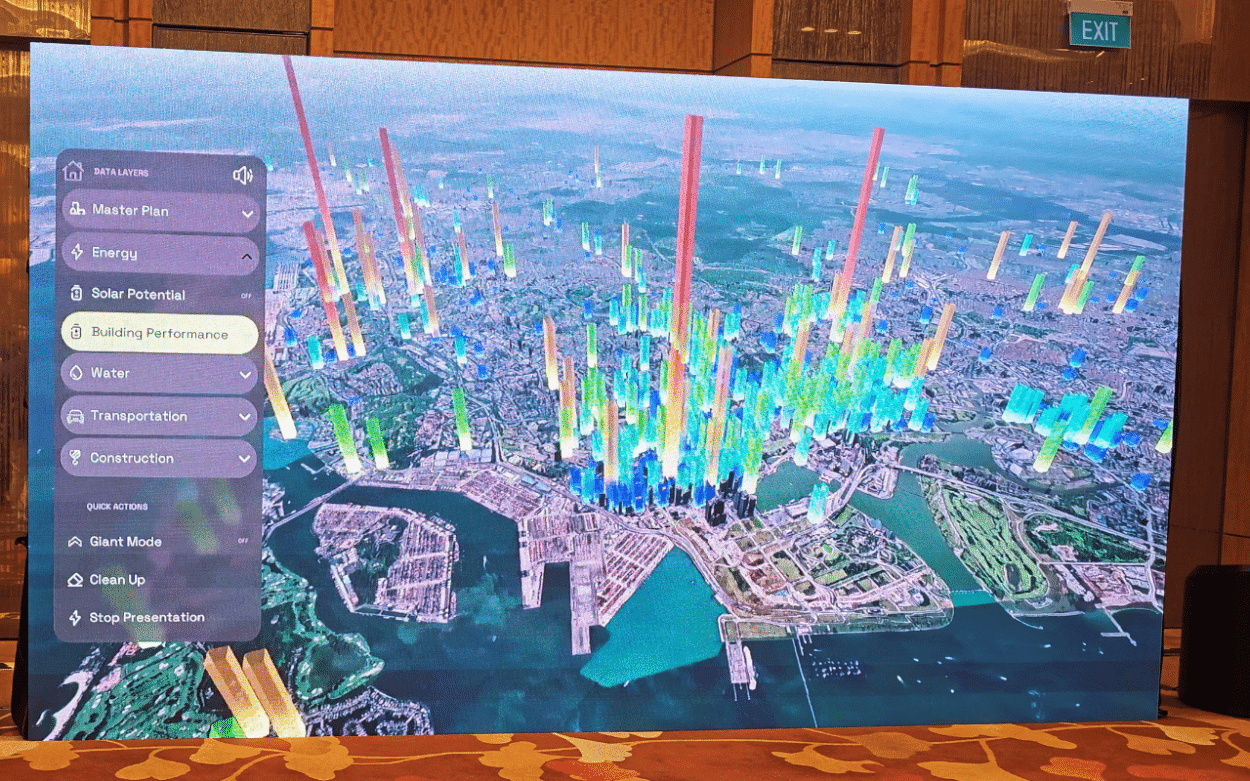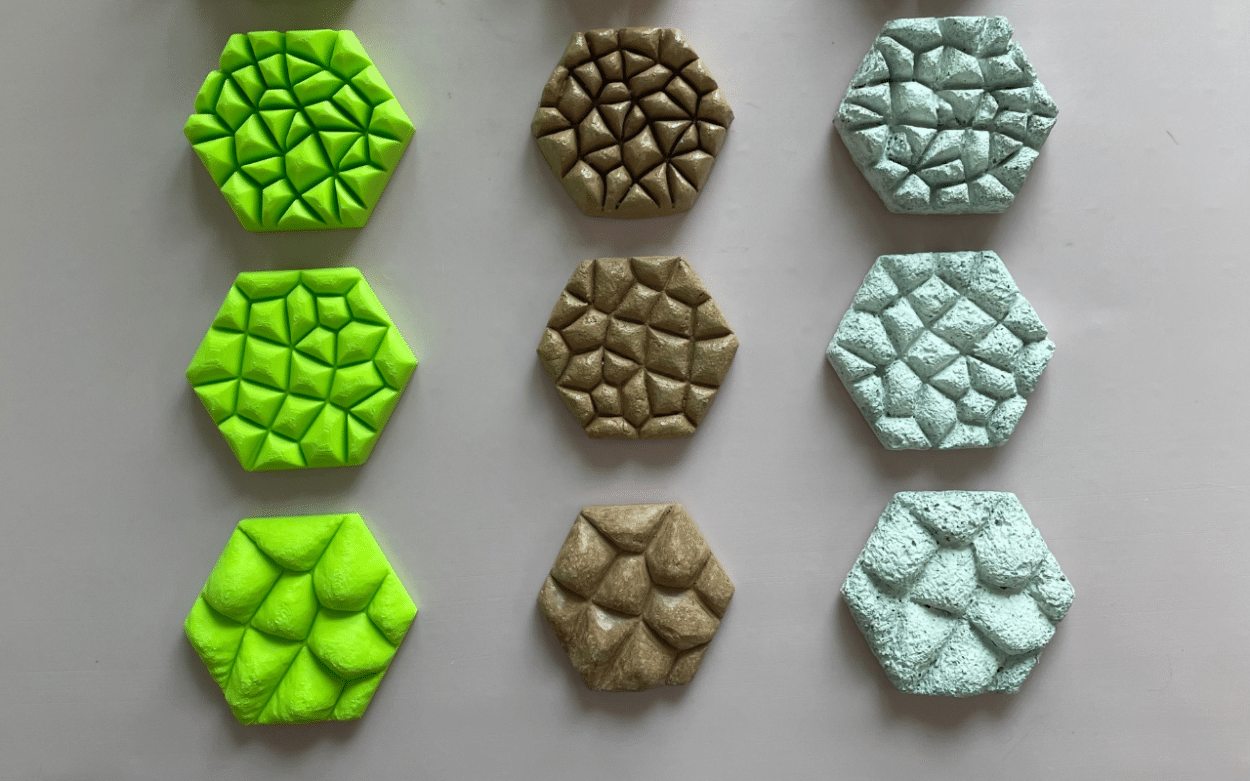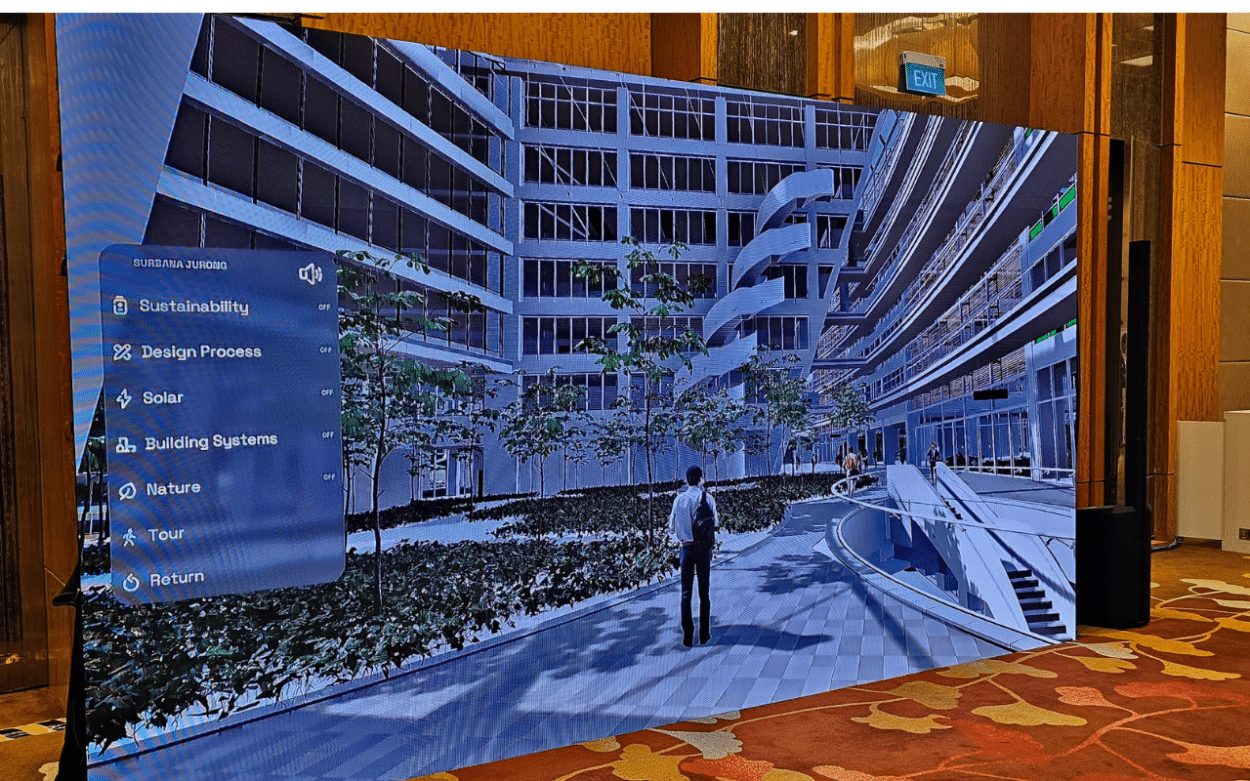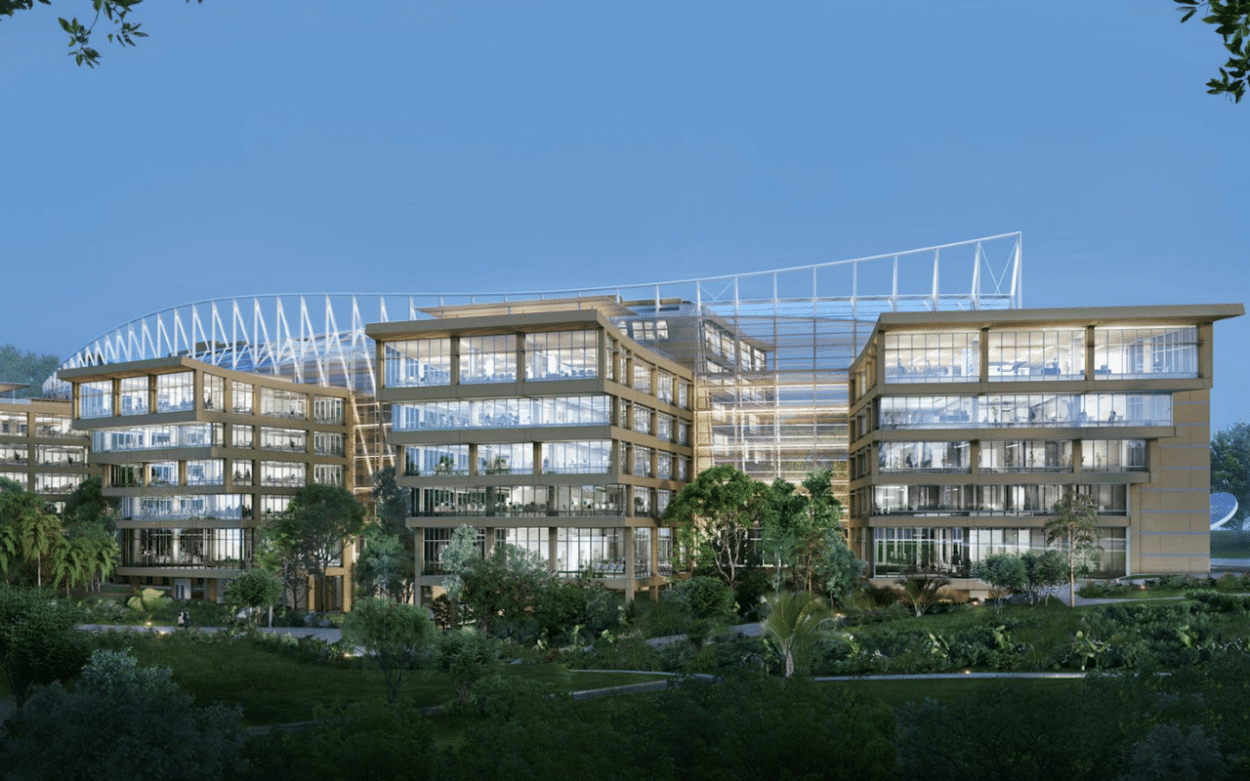Singapore’s ambition knows no bounds when it comes to creating a blueprint for the green city of the future. In a metropolis where concrete dominates the landscape, the challenge lies in finding innovative solutions to infuse it with greenery. The objective of the city-state is vital: it needs to adapt to climate change.
With a population of 6 million, Singapore boasts a remarkable statistic – it is home to more trees than residents, earning it the well-deserved moniker of the “Garden City.” However, this lush oasis has not emerged without significant urban development. Since gaining independence in 1965, Singapore, now recognized as the most significant financial hub in South Asia, has aggressively pursued the path of urbanization, making it the most densely populated city in the world.
And this urbanization has come at a cost. The temperature in the city-state has risen by a noticeable 1°C over the last 30 years (it remains consistently around 28°C), a rate that is twice as fast as the global average. This rapid urban expansion presents a unique challenge, and the imperative is clear: Singapore must address the consequences of this heat and adapt to the realities of climate change.
Adapting to Climate Change
The city-state stands as a living laboratory for sustainable urban development, propelled by unwavering commitment from its authorities. Singapore has embarked on an array of solutions that promise to address these challenges head-on. One crucial approach involves enhancing urban vegetation to reduce temperatures, enhance natural cooling, and decrease reliance on air conditioning. A vital tool in achieving this is digitization.
Last month, we we invited to attend the annual event “The Year in Infrastructure” by software provider Bentley Systems in Singapore. During the event, participants highlighted the city-state’s commitment to digital transformation and engineering resilience in response to the challenges posed by climate change.
For Bentley CEO, Greg Bentley
“Adaptation has emerged as a vital new imperative for sustainability, as recognized when world leaders gathered in the past year to set climate change action priorities. However, adaptation relies heavily on infrastructure engineering. Singapore is taking proactive measures to adapt its infrastructure engineering by employing digital twins to address the challenges Singapore faces due to rising temperature.”
A Digital Twin For Singapore
Singapore has indeed set clear goals to reduce energy consumption, enhance water efficiency, and expand green spaces, including the planting of more trees and the development of more parks. These ambitious urban plans have been greatly enhanced through the utilization of Digital Twins, a technology that has proven indispensable in visualizing and comprehending the city’s transformative vision.
Singapore’s journey into the realm of Digital Twins began nine years ago, in partnership with Bentley Systems. Together, they laid the groundwork for Singapore’s first 3D city model. This foundational dataset serves as the cornerstone of the Digital Twin concept, integrating a wealth of 3D and 4D data. This comprehensive dataset is designed to accommodate the diverse needs of various local agencies, spanning a spectrum of applications, operational requirements, risk management, and strategic planning. It plays a pivotal role in orchestrating Singapore’s urban evolution and ensuring its goals of sustainability and efficiency are met.

According to Dr. Victor Khoo, Director of the Singapore Land Authority (SLA),
“The primary focus when starting this endeavor was to create a Digital Twin that could serve a multitude of purposes at the highest possible resolution and quality to make the city safe, sustainable, and smart. The main objective was to assess and manage the risks in the city, with a growing emphasis on sustainability applications. For instance, we are working on estimating the carbon footprint in Singapore, considering the abundance of greenery and trees, as one of the applications of the Digital Twin.”
Building Performance
The process involves aggregating publicly available data from various sources in Singapore to make sense of the information. This begins with a 2D zoning plan map for the city, which is projected onto Google 3D map tiles, allowing for a 3D visualization of the city, color-coded by building type, such as residential, commercial, or recreational areas. Geospatial data, in the form of GeoJSON representing green spaces, is also incorporated and presented visually, with green representing natural areas and other colors indicating different types of buildings.
According to Greg Demchak, Director of Bentley’s iTwin Innovation Lab,
“One innovative approach involves integrating Google map tiles with building performance data recorded in Singapore. This data includes energy usage, and an algorithm generates a heat map representing energy consumption for different buildings. This visual representation reveals patterns in energy consumption, such as identifying high-energy-use buildings, data centers, and well-performing structures like the Marina Bay Sands, which is LEED-certified Platinum.”
The digital twin also allows authorities to simulate various scenarios, such as increased tree planting, higher adoption of electric vehicles, and reduced use of air conditioning, and evaluate their effects on the city’s temperatures.

Monitoring The Water System
This approach isn’t limited to energy; it extends to water infrastructure. In Singapore, the Public Utilities Board (PUB) is actively pursuing a Smart Water Grid Anomaly Detection and Localization project. Sensor data monitoring the water network in Singapore, particularly pressure, helps identify potential leaks, enabling proactive maintenance to prevent larger problems and offering predictive capabilities.
According to Greg Bentley,
“We are applying AI comprehensively based on our open flows Darwin genetic algorithms and deep learning from pressure and volume sensor behavior patterns to predict and localize water system anomalies and thus avert dangerous and wasteful leaks for resilience and conservation. To advance this infrastructure intelligence to near real-time, the project’s digital twin innovations include parallel processing and acoustic signal analysis. Accordingly, AI indeed compounds the value of these digital twins combined ET, OT, and IT data. What’s indispensable is the sensor and anomaly history on which we can see the PUB AI being trained successfully to have correctly warned before actual leaks.”
New Building Facades
To combat climate change, innovative technologies have emerged, offering sustainable solutions that draw inspiration from the natural world. One such innovation involves tiles designed to replicate the cracked skin of elephants, and this unique concept has the potential to address the challenges posed by rising global temperatures.
The Textured Tiles
These textured tiles are not smooth, unlike conventional flooring materials. Instead, they mimic the cracked texture found on an elephant’s skin. The ingenious idea behind these tiles is to harness the concept observed in nature: the ability of an elephant’s skin to release excess heat. This is called biomimicry.
One company at the forefront of this development is bioSEA, located in Singapore. The company has been actively working on the creation of these textured tiles since 2021. What sets these tiles apart is their ability to retain moisture, fostering an environment that supports local ecosystems. They create shaded areas, mitigating the harsh effects of direct sunlight, and they also offer an additional layer of protection for buildings against the heat.
We spoke with Anuj Jain, Principal Ecologist at bioSEA,
“What we’ve essentially created is a methodology that involves examining elephant skin patterns, understanding their scale, and determining the underlying principles. Depending on factors such as the angle of the sun and other parameters, we can curate a design that maximizes efficiency. In an ideal future scenario with more additive manufacturing and AI technology, each building tile could be uniquely different, similar to the diversity of human and elephant skin.”



Compared to traditional smooth tiles, these textured tiles have demonstrated a remarkable impact. According to Anuj, buildings that incorporate these tiles can experience up to a 20% reduction in indoor temperatures. This reduction is significant as it lessens the need for energy-intensive air conditioning systems, leading to substantial energy savings and reduced carbon emissions.
“We’ve developed various designs, resulting in efficiency ranging from approximately 20% to about 70% reduction in heat flux. The extent of temperature reduction depends on the application and the quantity of tiles used. In some cases, you can achieve a decrease in indoor temperatures by a few degrees.”
These tiles are crafted from recycled materials, including discarded clay sourced from construction sites, along with other waste products such as food waste, coffee grounds, and banana peels as well as 3D-printed biodegradable plastics.
The Modular Brick Systems
bioSEA has also developed modular brick systems that enhance airflow within spaces, inspired by termite mounds. Comprising five bricks stacked together, each unit features internal tubes and branching structures, departing from the conventional closed surface of traditional brick walls. These bricks offer a novel perspective compared to standard windows and could have applications, for example, in data centers.
“Through performance testing, we have determined that, in terms of ventilation, our design surpasses traditional methods by approximately 28%. One immediate application could be in a data center because they generate so much heat due to the computers and they need extensive air conditioning. Given that data centers primarily house machines rather than people, integrating ventilation features into the building structure holds significant potential.”
The Surbana Jurong Campus
Thinking ahead of a building is Singapore’s goal, and this is precisely what was achieved with the Surbana Jurong campus. Completed in 2021, this eco-friendly workspace nestled within the Jurong District Eco-Garden in CleanTech Park in Singapore illustrates the nation’s dedication to seamlessly integrating nature and architecture.
A Sustainable Building
The 68,915-square-meter campus features a series of low-energy, treehouse-like pavilions designed to accommodate 4,000 employees. It incorporates self-shading facades to maximize natural light and minimize solar heat gain.
According to Surbana Jurong,
“This approach results in a 36% reduction in solar heat gain.”
The campus also embraces cutting-edge technologies to optimize energy consumption. Underfloor cooling, strategically implemented in high-traffic areas, maximizes functional potential without solely relying on air conditioning. The reduction from four to three chillers, based on energy modeling limits dependence on air conditioning. Solar panels contribute to generating a renewable energy output of 340 MVH per year. Water sustainability is facilitated by the presence of rain gardens and bio-swales.





A Digital Building
The Surbana Jurong campus was among the first non-residential buildings to fully embrace integrated digital delivery. The design was optimized through the use of digital tools and digital twinning technologies. We were able to dive into the digital model of the campus during Bentley’s Year in Infrastructure.
The design also places a premium on preserving mature trees and vegetation, with a meticulous mapping and analysis process ensuring that the construction respects and integrates with the existing natural features. For instance, before construction, the area incorporated Banyan trees and unique species of flora.
They became assets in the digital model of the project, similar to any other asset, and the campus was built with this consideration. The Surbana Jurong website states that over 50% of the existing green area was maintained.
From sustainable infrastructure and urban planning to harnessing technological innovation, the “Garden City” Singapore has no other choice today but to redefine urban living to adapt it to climate change. It is also pioneering the city of the future – one where the concrete jungle thrives with a green heart, ensuring a sustainable and harmonious urban environment for generations to come.










